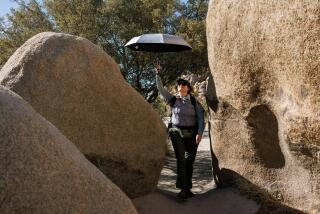Desert Warfare Stress and Strategy
- Share via
Desert battlefields pose special problems for troops and equipment. Here are some of the hazards and challenges:
Temperature extremes: Temperatures can vary 50 degrees in one day. Highs range from 110-120 in the day to lows of 65-80 at night.
Water Needs: Soldiers may drink about six gallons of water a day, the equivalent of 24 full canteens.
Navigation: The compass is an important navigation tool in the featureless terrain, especially during night movements.
Optical systems: Many optical systems are susceptible to distortion in daytime heat. But thermal sighting systems actually work better in the desert night. They detect heat from enemy targets and allow troops to take aim.
Camouflage: Soldiers wear light, sand patterned uniforms. Equipment and armor are camouflaged to make up for lack of natural cover. Camouflage also suppresses reflections and sounds that can travel long distances in the arid desert air.
Vision aids: Goggles shield eyes from the grinding sand and glare of the white terrain, which makes it difficult to avoid squinting even at dusk. Night goggles intensify starlight to illuminate the desert’s moonscape.
Sources: Dept. of the Army, World Weather Bldg.


